A back and bicep workout includes exercises like the bent over row, bicep curls, hammer curls, T-bar row, and preacher curls.
These exercises help strengthen the muscles, improve definition, and increase or maintain muscle mass in the back and biceps.
It is important to start with warm-ups like shoulder mobility exercises and trunk rotations to reduce pain, improve performance, and prevent injury.
Sample exercises
Some exercises to include in a back and bicep workout include:
1. Bent over row
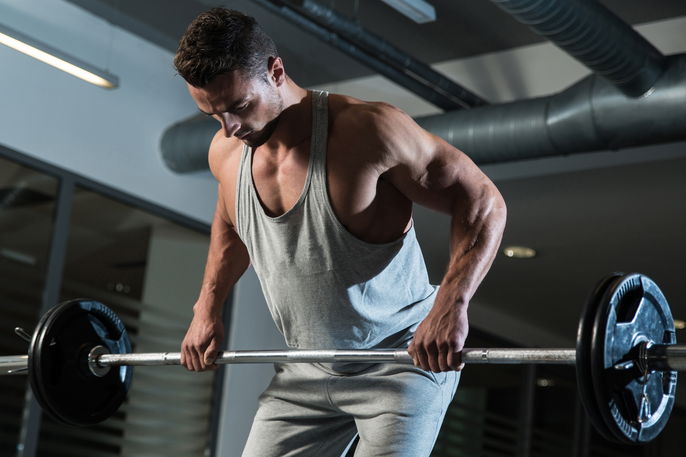
The bent over row strengthens and/or builds muscle in both the upper and lower back in addition to working the biceps.
The bent over row can be done with a barbell or two dumbbells, or using the cable machine. If using dumbbells, you can try lifting both weights at the same time or alternate sides with a single-arm bent over row.
How to do: start in a standing position with your knees slightly. Hinge forward at the hips and position your hands slightly farther than shoulder-width apart on the bar.
Bend your elbows and pull the barbell or dumbbells up toward your hips, keeping the abs engaged throughout.
Next, lower the bar or weights toward the floor until your arms are fully extended, then repeat the move. Do 2 to 4 sets of 8 to 15 reps each, or as recommended by an exercise physiologist or certified personal trainer.
2. Bicep curls

Bicep curls increase muscle mass and help build bigger biceps, which is the muscle located in the front of the upper arm between the shoulder and the elbow.
How to do: begin in a standing position holding a barbell or two dumbbells down in front of you with palms facing forward. Hands (or weights) should be just wider than shoulder-width apart.
Keep your back straight and arms at your sides. Bend your elbows and bring the barbell or weights up to the level of your shoulders, keeping your upper arms and elbows tight to your sides.
Slowly lower the barbell or weights back to the starting position until your arms are almost completely extended. Do 2 to 4 sets of 8 to 15 reps each.
3. Hammer curls

Hammer curls target the biceps to help increase and maintain muscle mass.
This exercise can be done using dumbbells, the cable machine, or a barbell.
How to do: stand holding the dumbbells with palms facing in and arms straight down by your sides.
Keep your back straight, your abs pulled in, and your elbows tight to your sides throughout the exercise. Bend the elbows, bringing the weights up to the level of your shoulders.
Lower the weights slowly back to the starting position and continue the exercise. Do 2 to 4 sets of 8 to 15 reps each, with 60 to 90 seconds of rest in between sets.
4. T-bar row
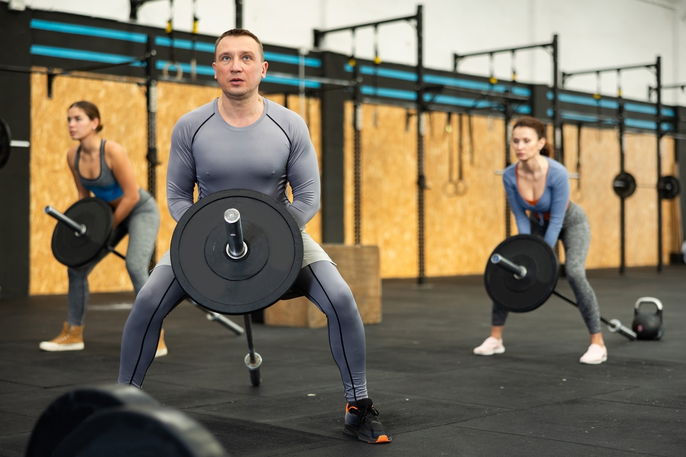
The T-bar row is used to strengthen the muscles of the back, including the trapezius (traps), latissimus dorsi (lats), and rhomboids.
How to do: stand with one foot on either side of the T-bar, feet hip-distance apart, facing the barbell plate. Keep your abs tight and a soft bend in your knees.
Hinge forward and grab the handles, pulling your shoulders back as you lift the weight up to the starting position. Your torso should be at a 45° angle with your arms full extended. Next, bend your elbows as you pull the front of the bar up toward your chest.
Lower the bar back down to the starting position. Do 2 to 4 sets of 8 to 15 reps each.
5. Preacher curls
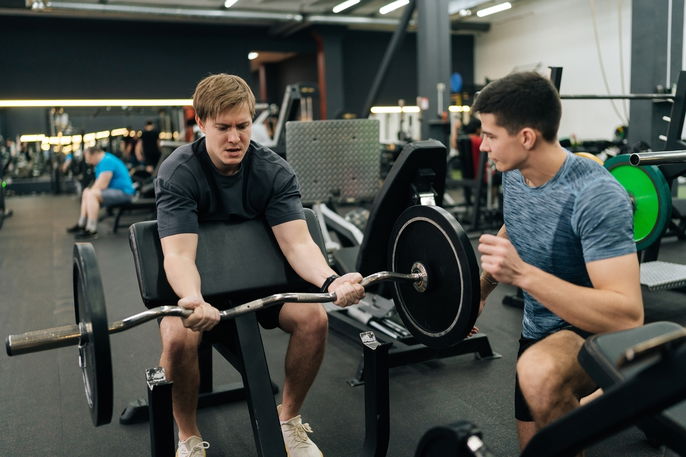
Preacher curls are a great exercise to include in a back and bicep workout because they isolate and strengthen the biceps.
How to do: load the weights onto the bar and take a seat on the bench, leaning forward so your armpits are securely in place and your upper arms and elbows are supported on the cushion.
Grab the bar with palms facing up and bend your elbows as you bring the bar up to meet your shoulders.
Extend your arms as you lower the bar slowly back to the starting position, then repeat the movement. Do 2 to 4 sets of 8 to 15 reps each, or as recommended by your instructor or personal trainer.
6. Single arm dumbbell row

The single arm dumbbell row targets the muscles of the back, working to strengthen the back and improve posture. It can be done using a dumbbell or kettlebell.
How to do: place your right hand and right knee on the edge of a workout bench, keeping your back straight and parallel to the floor and head in line with your spine.
Keep your left foot flat on the floor with abs pulled in. Hold a dumbbell or kettlebell in your left hand and bend the elbow as you pull the weight up toward your abdomen.
Slowly lower the weight back to the starting position. Do 2 to 4 sets of 8 to 15 reps on each side.
7. Machine row
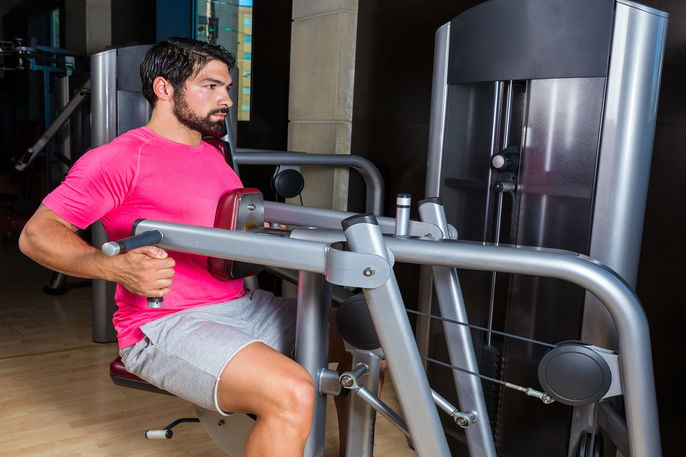
The machine row, or seated cable row, can be added to a back and bicep workout to help strengthen the muscles of the lower back.
How to do: load the weights then take a seat on the bench, adjusting the height of the seat as necessary and placing your hands on the handles with palms facing in.
Keep your back straight and shoulders pulled down and back, while keeping your abs tight and firm against the cushion.
Pull the handles toward your chest, bending your elbows. Slowly extend your arms to return to the starting position. Do 3 to 5 sets of 8 to 15 reps each.
8. Front pull-down

The front pull-down, or lat pull-down, works to strengthen and increase definition of the back muscles, such as the latissimus dorsi (lats), trapezius (traps), and rhomboids.
The front pull-down can be down using a cable machine or functional trainer, using a straight bar or triangle attachment.
How to do: adjust the height of the bench, check the bar attachment (if using), and load the weights. Sit facing the apparatus, securing your knees under the knee pads and planting your feet firmly on the floor.
Grab the bar with your hands separated slightly more than shoulder-width apart. Extend your arms as much as possible, keeping your back straight, abs tight, and gaze toward the front.
Slowly pull the bar down toward your chest, then return to the starting position. Make sure to avoid extending your arms completely at the top.
Do 2 to 4 sets of 8 to 15 reps each, or as recommended by an exercise physiologist or personal trainer.
9. Seated low rows
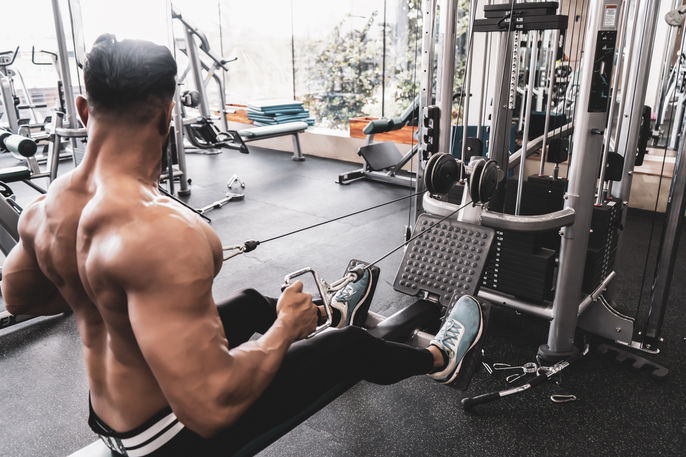
Seated low rows strengthen the muscles that attach to the scapula (shoulder blades) and elbows. They can be done using the cable machine or pulleys.
How to do: load the desired weight and position yourself on the seat with your back straight, abs tight, and feet on the platform, keeping the knees slightly bent.
Hold the bar or handle attachment and pull slowly toward your waist. Do 2 to 4 sets of 8 to 15 reps each.
It is important to keep the shoulder blades stable and the gaze forward throughout the exercise.
Seated low rows can be done using a bar or triangle attachment or two pulleys with handles. Grip can be neutral, with palms facing in; pronated, with palms facing down; or supinated, with palms facing up.
10. Straight arm pull down
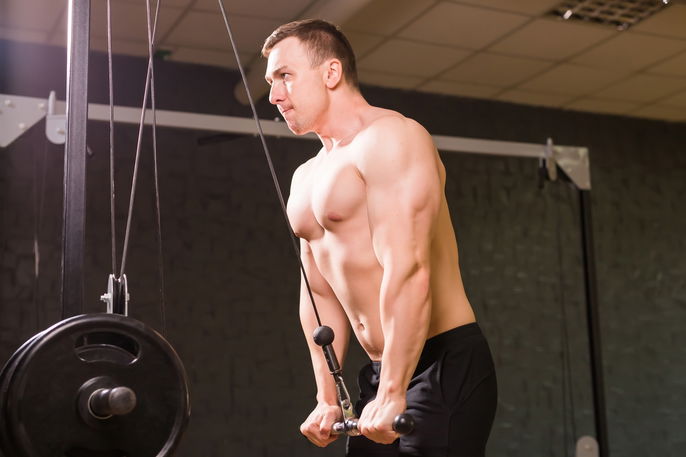
The straight arm lat pull down is an exercise that works the latissimus dorsi (lats) muscles of the back.
How to do: connect the bar attachment to the cable and load the weights. Stand facing the machine and grab the bar with your hands shoulder-width apart.
Hinge slightly forward and pull the bar toward your thighs. Reverse the move by allowing the arms to slowly lift back to the starting position.
Do 2 to 4 sets of 8 to 15 reps each, or as recommended by an exercise physiologist or certified personal trainer.
Also recommended: Complete Back Workout: 12 Back Exercises for the Gym (w/ Demos) tuasaude.com/en/back-workout




























